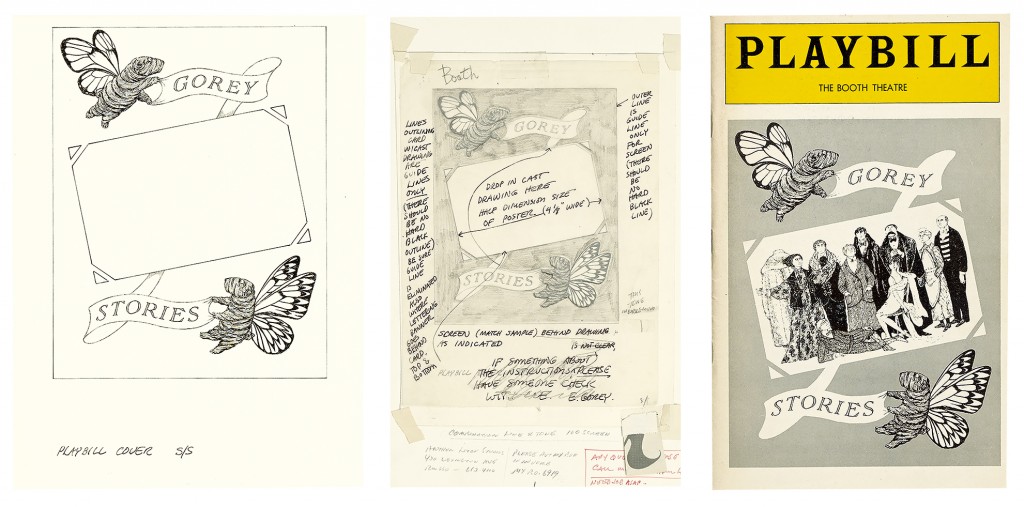One of the most appealing qualities of Illustration Art is the physical evidence of the creative process that goes into its making.
While most other works of art appearing at auction are finished, approved prints or canvases, original illustrations often have their “bones” showing. By this, I mean that one often encounters images that still contain labels and marks, usually on the front or back (recto or verso) margins that served as directions to the printers and publishers who would reproduce the work. Such marks might include captions, notes to (or by) the printers including page numbers where the illustration would appear in the publication, and sometimes the artist’s or publisher’s stamps or labels indicating ownership, date and place of publication. These marks give the illustrations a look that is more raw than a finished piece and may offer enlightening details about the illustrator’s methodology. It is often a quality that is attractive to collectors who enjoy this visual history as part of a work’s display.
While most other works of art appearing at auction are finished, approved prints or canvases, original illustrations often have their “bones” showing.
Most commonly seen, crop marks (also called trim marks) are the thin lines placed at the corners of the paper or board on which the illustration was created, indicating where the finished project was to be trimmed. They can be seen on the lower edge of Garth Williams’ endpaper drawing for Charlotte’s Web below.

Garth Williams, endpaper drawing for Charlotte’s Web, pen and ink with pencil and wash, circa 1952. Sold January 22, 2015 for $10,625.
Registration marks are used to align the artwork with any other application during production, usually if wording or backgrounds were to be later applied to the final image. They often look like a small target with a cross and sometimes appear near the crop marks as in this illustration for the Dick and Jane book:

Richard Wiley, Where We Like to Go, mixed media with collage, featuring the first African-American children to appear in the Dick and Jane series. Sold January 28, 2016 for $2,750.
Sometimes, in addition to the registration marks, celluloid or clear acetate overlays were applied on top of the work and allowed for notes or other features pertaining to the final drawing. Here is a good example of an Edward Gorey drawing used for the cover of Playbill that contains the printer’s specific notes and shows the progression from original drawing to finished product.

Edward Gorey, Gorey Stories, Playbill cover sketch mockup, pen and ink and graphite with overlay. Sold January 28, 2016 for $4,000.
So much minute hand work was used in vintage illustration art. This George Petty centerfold for the July 1941 Esquire Magazine shows both sketched-out, unfinished portions of the artwork as well as applied details in the form of small paper onlays used in the woman’s uniform insignia.

George Petty, …so take my advice and just bet your shirt, early variant of the July 1941 Esquire Magazine centerfold, watercolor and gouache with overlays and cut-outs. Sold January 23, 2014 for $7,500.
These hilarious Richard Taylor cartoons for Playboy are excellent examples of original art boards showing a variety of marks and indications, from the publisher’s stamp, to crop and registrations marks, to the hand-written caption by the cartoonist himself.

Two Richard Taylor ink and watercolor cartoons published in Playboy. Sold January 23, 2014 for $1,750 each.
And sometimes, just the rough, unfinished borders of a piece, if left to be seen, add to the edgy feel of illustrations for pulp magazine as shown in this racy Lou Marchetti cover for Intimate Affairs of a French Nurse.

Lou Marchetti, Intimate Affairs of a French Nurse, gouache, cover for Florence Stonebrakers’s pulp novel of the same name, New York, 1953. Sold January 28, 2016 for $1,820.
Illustration Art instills delight and evokes fond memories. Our interest in this fascinating genre is enhanced when we consider the editorial choices indicated by crop marks, annotations, and other markings.
For more examples of original illustration art with artist and editor markings, take a look at some of our previous catalogues, and keep an eye out for more details on our upcoming sale in Fall 2016.
The post Margins, Notes & Stamps: Looking at the Bones of Illustration Art appeared first on Swann Galleries News.


















